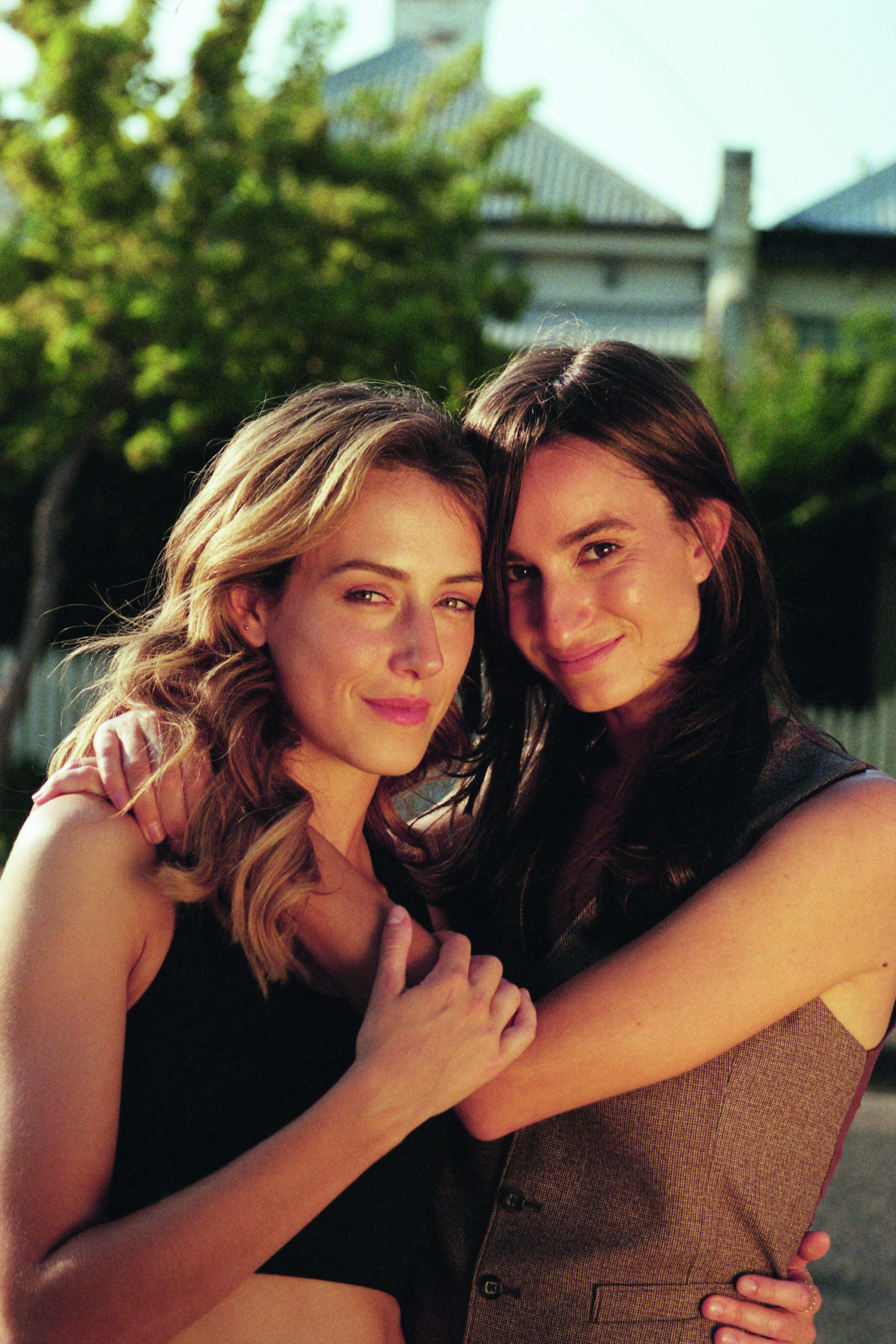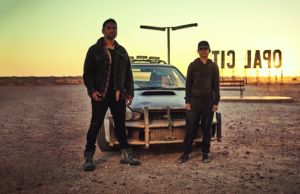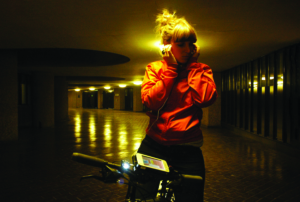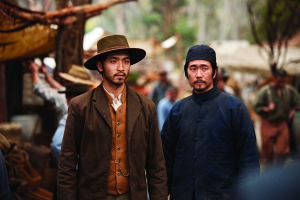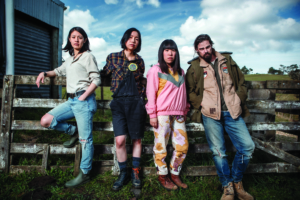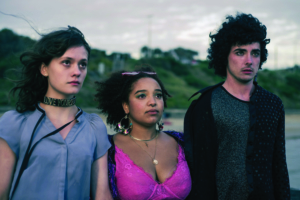When Kathleen Lee was twenty-eight, she was diagnosed with autism spectrum disorder (ASD). The Melburnian writer/director/actor was about to go into production on Sex and Death, a story initially penned as a feature-film screenplay and eventually made as a six-episode web series. Even though Lee had written it before her diagnosis, Sex and Death is, in many ways, an exploration of how a neurologically different person can find difficulties in navigating the world – and social cues – of neurotypical people.
Lee – the series’ creator, writer, director, editor and star – plays Charlie, a twentysomething acting student living in Melbourne’s inner north. Across six episodes (whose combined seventy-one-minute running time is essentially equivalent to a brisk feature), it often resembles a romantic comedy: the first episode is called ‘Dumped and Humiliated’, beginning with that familiar fall that often occurs at the start of romantic comedies; and the story is, in many ways, a chronicle of her romantic struggles. Like so many tales of people in their twenties, the series is ultimately a narrative about self-discovery: working out who you are, as well as where in society – and/or among which social groups – you’ll be allowed to be that person.
This reflects on Lee’s experiences not just as a young artist, but as someone dealing with undiagnosed ASD. ‘A lot of people with autism, particularly girls, hide it, and mask to try to fit in socially,’ says the thirty-year-old. ‘You feel as if you need to hide the parts of you that are different […] You don’t see how they can fit into conventional social interactions.’ The typical outcome, she says, is that ‘you try to change them, or hide them, so you can be a part of the world’.
One coping strategy, for Lee, was to socially surround herself with extroverted, self-obsessed, big-personality types – ‘people that allowed me to be really passive’. In turn, Sex and Death finds Charlie dealing with Damian (Robin Brown), the ‘alpha male who makes a joke out of the fact that he’s an alpha male’, and Tanya (Isabella Giovinazzo), the entitled, yoga-loving, Summer Bay–ready ‘girly girl’ who swans about oblivious to how easily things come to her. Charlie and Tanya are roommates, fellow actors and an odd couple deep into a dysfunctional ‘best’ friendship. Charlie has spent years casually sleeping with Damian, but now he’s severed their sexual set-up (the term ‘fuck buddy’ is used) to be with Tanya.
The love triangle turns quadrangle when Charlie meets Pat (Jonathan Schuster), whose flat, deadpan affect she is instantly attracted to. The foursome resembles the classic rom-com quartet – the conventionally attractive guy and girl and their ‘quirky’ best friends – only, here, the narrative centres on the kooky offsiders, not the standard, less complicated, alpha-male/female protagonist. The four of them grow even more tangled when Tanya, who forever feels the need to share in or want for herself what Charlie has, starts turning her own affections from Damian to Pat. Comedy ensues – sometimes – but, moreso, moments of much social awkwardness.
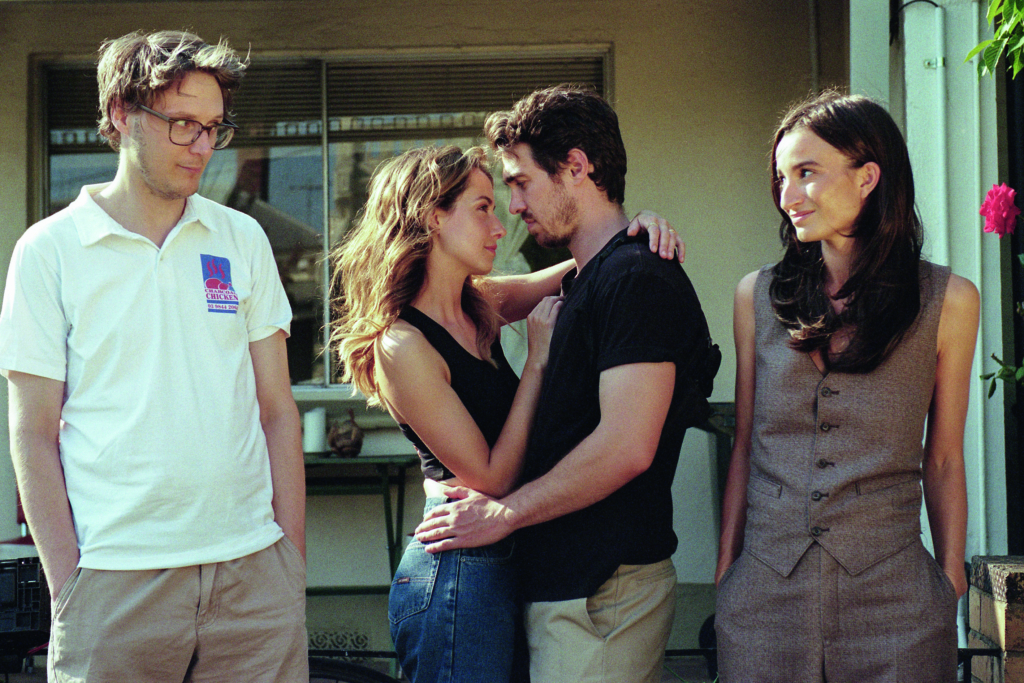
Lee was first inspired to write this story when she had a similar encounter to Charlie’s: meeting someone who she instinctively felt was ‘like her’. Like Pat, this person was a deadpan communicator, which meant Lee didn’t have to try and read facial expressions, body language or social signals, simplifying social scenarios she often found complicated. ‘I’d never met anyone the same as me before,’ Lee says. ‘I thought I’d met “the one”. But it turned out not to be like that at all.’
Lee spent five years working on turning this story into a script. Writing, she thinks, is a situation for which her autistic brain is well suited. ‘Stories are like mathematical equations,’ she offers. ‘This plus this is going to have this effect, and if you subtract this, then you’re going to feel that. Writing stories, for me, is like putting emotions and people into structures that I can understand.’
Things kicked into gear when Lee started working with, and for, Tobias Willis, the Melburnian director (responsible for the 2018 documentary Now Sound: Melbourne’s Listening[1]See Anthony Carew, ‘Aural Reflections: Music, Self and Objectivity in Now Sound: Melbourne’s Listening and Her Sound, Her Story’, Metro, no. 201, 2019, pp. 100–7. and innumerable local music videos) who founded KEWL studios, and serves as the producer (and comic acting-class scene-stealer) of Sex and Death. Working with a host of people they’d attended film school with at Swinburne University, the pair approached it in a largely DIY way: though they had principal production investment from Screen Australia, it was a super-low-budget affair, with most people volunteering their time. The web-series release was an extension of that approach – a free online release providing an accessible, quickly disseminating platform. Shot largely in the suburb of Clifton Hill, with acting-workshop scenes filmed at Carlton’s La Mama Courthouse Theatre, Sex and Death has a strong local character.
The fact that the series features only five principal actors – the four main characters and Charlie’s caustic, foul-mouthed acting teacher Greg (Greg Ulfan) – suggests its budgetary limitations. But it also evokes the insularity and incestuousness of twentysomething friendship groups, wherein sharehouse living often leads to shared lives. The bond between the characters is largely built on mutual dependency: instead of splintering off when there’s conflict among the group, Charlie draws herself in deeper. Even though Damian and Tanya initially come off as being somewhere between comic caricatures and awful people, Lee says there’s meaning to this: Sex and Death is a story that finds her character ‘finding a safe place to hide, to not really be herself’.
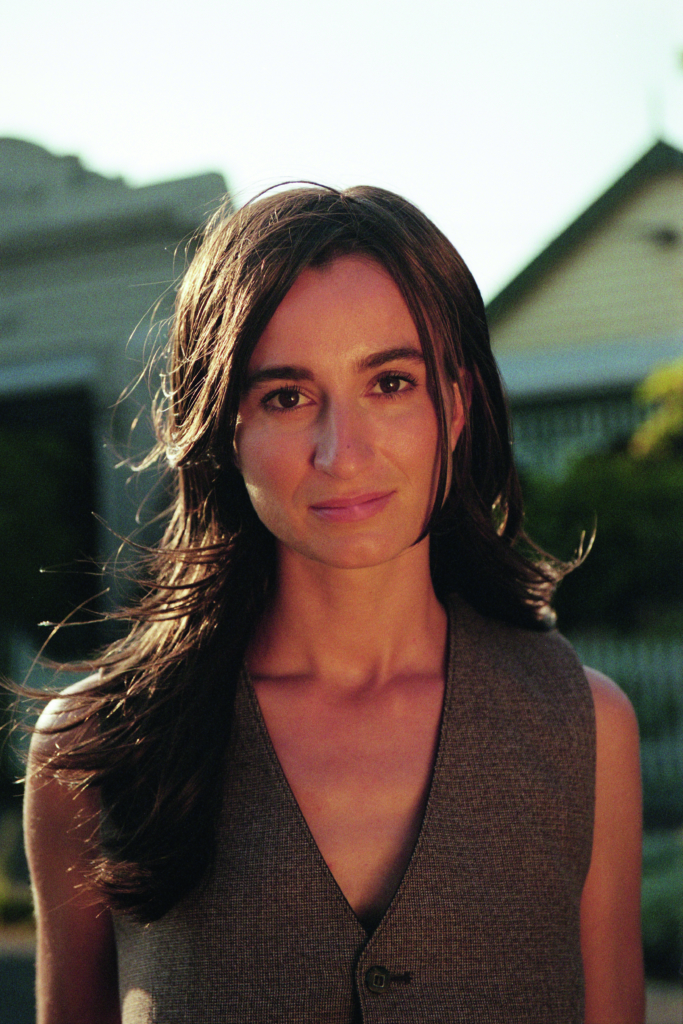
Lee sees the main character as a distillation of one aspect of herself, one part. That part is, essentially, someone ‘tiptoeing around everyone’ in fear of being seen for who they really are. ‘She’s scared to be authentic,’ Lee says. ‘Her whole focus is on other people [… on] controlling how she comes across so that she doesn’t annoy anyone else.’
These kinds of ‘masking’ behaviours are familiar to people with ASD, which makes it interesting that Lee hadn’t been diagnosed when she wrote the initial story. So much of what her character does – largely, struggling to interpret complex social situations; there’s a whole episode, called ‘Signals’, about trying and failing to pick up on the unspoken – resembles familiar scenarios for a neurodiverse person. Sex and Death could be viewed as a writer figuring herself out through story, just as the story itself features a main character trying to figure herself out. After receiving her diagnosis as being on the spectrum, some of that was clarified for Lee: ‘It made the fact that I keep writing stories about people not knowing how to be themselves – or [of] myself not [knowing] how to be myself – make sense.’
Though others, including relatives, had suggested to Lee she could have ASD over the years, she dismissed the idea because everything she had read on the subject suggested that not being interested in other people was a hallmark of autism. ‘And all my life I have been obsessed with other people,’ she offers. ‘Ever since I was a little girl, all I do is stare at other people, analyse them, and try and figure out how they work.’
This sense of being an observer is, of course, a great trait to have as a writer. As a figure for drama, it works, too. Struggling to pick up on social cues and signals in potential romantic scenarios, for both herself and others, Charlie has, Lee thinks, ‘an exaggerated version of the problems that everyone has in romantic situations’; this exaggeration, Lee believes, creates a more natural comic sensibility, as well as an easy point of identification for viewers.
The fact that the series features only five principal actors suggests its budgetary limitations. But it also evokes the insularity and incestuousness of twentysomething friendship groups.
‘Did I behave really weirdly back there?’ Charlie asks Pat, early in Episode 2 (‘Can I Punch You?’). She’s still wondering whether what she’s finally intuited – that Tanya and Damian are sleeping together – is true. She’s mad about it, not out of rejection or betrayal, but largely because she was kept in the dark. ‘I hate it when people know stuff I don’t know,’ she says. Her character is recurringly apologetic, to the point of absurdity. ‘I am weird; it’s my fault,’ she says, when the topic is her lack of sexual fulfilment when she was with Damian. The line feels all-purpose for the series and its social scenarios: Charlie is always apologising for, essentially, being who she is. A key dramatic/thematic development comes when Tanya pushes back on this dynamic: if Charlie is constantly apologising, and assuming blame or fault for everything, it’s a form of insincerity, and something that’s essentially denying a shared reality. ‘Don’t apologise – it’s so confusing when you apologise,’ Tanya says, in a key dramatic scene in Episode 5. ‘How am I supposed to know I’m being a bitch if you’re apologising all the time and making it seem like it’s your fault?’
The friendship between the two is, ultimately, the most important relationship in Sex and Death; the one-note alpha male is soon sidelined, and the potential projected onto Pat (who, it turns out, is married with a child) doesn’t reflect what he offers in reality. When Tanya decides that she, too, likes Pat, that doesn’t make her some simplified ‘bitch’ or sitcomesque romantic rival – just a person with desires of her own. Charlie confesses she sees Tanya as ‘this cool, opposite version of me’, oft feeling as if this blonder, prettier, more charming girl is stealing everything that could be hers (roles in advertisements, parts in plays, love interests). But she stops short of outright blaming Tanya; instead, she discovers that she need only express her feelings, communicate clearly and, ultimately, be herself.
This central narrative is mirrored in Charlie’s recurring visits to her acting class. She’s drawn to acting, it seems, as a place to hide: to recede into playing others rather than being herself. But, to her teacher’s dismay – which he communicates via vituperative rants – this means that she’s bringing nothing ‘real’ to her stiff, unconvincing rehearsal scenes (from Uncle Vanya, opposite, of course, Damian). ‘Of all the fucked-up, deluded students I’ve ever worked with, you are by far the worst,’ he spits, midway into a rage meltdown. ‘You’re not fucking real, Charlie; you’re not even a fucking person. You’re a fucking mouse.’
Eventually, Charlie has to learn to own her own feelings and to then channel them into her acting, and that this grand public form of self-revelation is okay. There are interesting echoes in Lee’s own journey, given that this narrative – about a girl accustomed to hiding her true self – was written out of her own experiences in hiding herself. Lee’s great revelation of self, then, is Sex and Death, an episodic web show centring on a character, played by her, that most viewers will see as a stand-in for her.
Whereas Charlie struggles with being ‘watched’ by her fellow students and casting agents, and even with the very idea of a theatre audience, Lee was happy to be at Sex and Death’s centre. She loved performing, directing, collaborating with old film-school friends. And she even loved editing, too. With editing, Lee sees similarities to the way her brain is drawn to writing: in creating the structure of a story, there’s again a logical, almost mathematical approach. Holing up day after day by herself, watching herself on screen, didn’t bother her. ‘It’s interesting seeing what your face does,’ she marvels. ‘Maybe that sounds vain. [Willis] tells me I cut to myself way too often, so he might agree.’
In turn, Sex and Death is a story, and a filmed entertainment, that has a strong singularity of vision. With one person as its writer/director/editor/star, it’s personal in a way that larger productions are not. In this way, it turns its limitations into a strength. For all its moments of wonkiness or (acknowledged) employment of rom-com tropes, Sex and Death benefits greatly from its personal quality. For so long, depictions of autism on screen were synonymous with figures like Tom Hanks’ title character in Forrest Gump (Robert Zemeckis, 1994) or Raymond Babbitt (Dustin Hoffman) in Rain Man (Barry Levinson, 1988). Here, we see a much more nuanced, low-stakes, identifiably domestic take on what is, Lee considers, the essential struggle for every neurodiverse person: ‘how to fit into a world that isn’t made for you’.
https://www.sexanddeath.online/
Endnotes
| 1 | See Anthony Carew, ‘Aural Reflections: Music, Self and Objectivity in Now Sound: Melbourne’s Listening and Her Sound, Her Story’, Metro, no. 201, 2019, pp. 100–7. |
|---|
